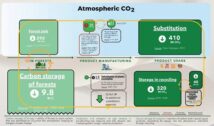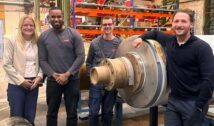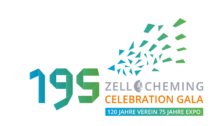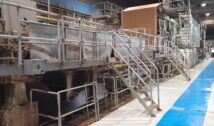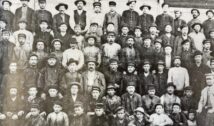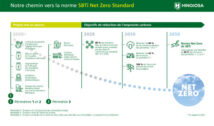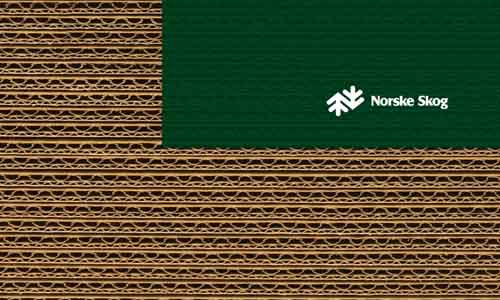
Norske Skog’s EBITDA in the third quarter of 2022 was NOK 508 million, a decrease from NOK 905 million in the second quarter of 2022. The third quarter EBITDA was impacted negatively by reduced volumes and higher fixed costs per tonnes following the closure for conversion of PM3 to containerboard production at Norske Skog Bruck, reduced CO2 compensation in Norway and significant increases in energy and raw materials, which more than offset the increase in sales prices for all grades. The containerboard conversion projects are progressing as planned.
“Despite the turbulence in the energy and raw material markets, we have been able to sustain satisfactory margins on our publication paper products. Our conversion projects at Bruck and Golbey are progressing as planned, and will contribute to a long–term sustainable industrial platform,”says Sven Ombudstvedt, CEO of Norske Skog.
Cash flow from operations was NOK 627 million in the quarter compared to NOK 473 million in the previous quarter, positively impacted by the operating results and change in working capital. Operating earnings in the third quarter of 2022 were NOK 113 million compared to operating earnings in the second quarter of 2022 of NOK 1 195 million.
The quarter was negatively affected by non–cash changes in fair value of energy contracts in Norway amounting to NOK 273 million. The Norwegian 2023 national budget proposal introduced a NOK 200 floor per tonne CO2 deduction in the CO2 compensation with retroactive effect for 2022. This will annually increase the energy costs for the Norwegian mills with NOK 140 million. Net loss in the quarter was NOK 11 million compared to a net profit of NOK 935 million in the previous quarter. Net interest–bearing debt was NOK 970 million at the end of the third quarter, with an equity ratio of 38%.
Status projects
The conversion of newsprint machines at Norske Skog Bruck and Norske Skog Golbey will add 760 000 tonnes of cost–competitive and low–emission containerboard capacity. The containerboard production will be fully based on recycled fibre, and will utilise green energy generated from the waste–to–energy facility at the Bruck industrial site and the biomass plant under construction at the Golbey industrial site (Green Valley Energie). The containerboard
investments are financed by debt facility agreements with an aggregate amount of EUR 265 million, having an average maturity towards the end of 2030.
“We are well prepared to soon serve both the publication paper and the packaging paper markets in a sustainable and profitable manner. We are now fine tuning our entire organisation to be prepared for entering a new era of opportunities within the containerboard markets,” says Ombudstvedt.
Bruck ceased newsprint production (PM3) in the quarter to enable the conversion of the machine to recycled containerboard production. Staff will remain on site until Bruck enters the packaging paper market in the first quarter of 2023. At Golbey, the conversion of one newsprint machine (PM1) into recycled containerboard production is progressing as planned with expected start–up in the fourth quarter of 2023.
The Green Valley Energie (GVE) joint venture, in which Norske Skog Golbey has a 10% stake, has started the construction of the largest biomass boiler of its kind in France at the mill site of Golbey. The biomass boiler will produce about 200 GWh of electricity and about 700 GWh of renewable heat, thus generating CO2 savings of 210 000 tonnes per year and providing electricity equivalent to the consumption of more than 13 000 homes.
“The Green Valley Energie project represents the transition of Norske Skog towards new growth markets and sustainable energy. The biomass boiler will ensure a stable, long–term supply of cost–competitive and renewable steam as an alternative to fossil energy sources, shielding us from the volatile energy markets,”says Ombudstvedt.
Norske Skog actively works to realise value from its industrial sites by developing existing infrastructure and industry competence. Norske Skog Saugbrugs has entered into a partnership with BEWI and BE Form to scale up production and commercialise the biocomposite product CEBICO. The microfibrillar cellulose product CEBINA has successfully been applied in various materials such as epoxy and spray filler. Through the partnerships with Ocean GeoLoop at
Norske Skog Skogn and Borg CO2 at Norske Skog Saugbrugs, Norske Skog aims to pursue the opportunity to become CO2 net negative or climate positive, and Norske Skog explores economically viable models for utilisation of biogenic CO2.
Operations
Total annual publication paper production capacity for the group is 2.0 million tonnes, with 1.7 million tonnes in Europe and 0.3 million tonnes in Australia. Norske Skog has numerous ongoing bio products and energy activities at all industrial sites.
Despite higher sales prices, operating revenue decreased from the previous quarter due to reduced production and delivered volumes as a result of the ongoing conversion of Bruck PM3. The sales price increases were driven by higher energy and other raw material costs. Variable cost per tonne increased mainly due to reduced CO2 compensation in Norway, higher energy and raw material prices in the quarter. Fixed costs per tonne increased somewhat due to lower production volumes. Group capacity utilisation was 85% in the quarter, 83% in Europe and 94% in Australasia respectively. High peak energy prices and limited availability of high priced recovered paper in Europe caused some operational down–time in the quarter impacting the capacity utilisation.
According to Eurograph, demand for standard newsprint in Europe decreased by 3% through August compared to the same period last year. SC magazine demand decreased by around 10%; whereas, LWC paper demand decreased by around 14% through August compared to the same period last year. According to official Australian trade statistics, demand for newsprint in the third quarter in Australasia decreased by 5% compared to the same period last year.
Outlook
The development in the global economy, especially within the raw material and energy markets, are of vital importance for the publication paper industry, and thus for Norske Skog’s operations. The general high level of uncertainty remains. Raw material and energy prices are expected to remain high and volatile during the winter and will impact the publication paper prices in Europe. The high energy prices and the lack of availability of raw materials may cause some production curtailments. Under these circumstances, Norske Skog will actively manage it’s energy exposure through the coming quarters.
Executed and planned capacity closures in the industry have resulted in a tight publication paper market. The favorable market balance is expected to remain into 2023. The turbulent operating environment, especially within energy, may result in further temporary or permanent closures in the industry.
The waste–to–energy facility at Bruck has been operating since Q2 2022, and is in its final phase of commissioning with Valmet to reach its full capacity utilisation. The facility significantly reduces the gas consumption, and thus CO2 emissions for Norske Skog Bruck.
Norske Skog continues to develop business opportunities for CEBINA and CEBICO. This includes evaluating a potential capacity increase for CEBICO bio composites materials beyond the existing 300–800 tonnes annual pilot–scale capacity. The review of a potential capacity increase comes at the back of Norske Skog Saugbrugs, BEWI and BE Form entering a partnership to commercialise CEBICO.




